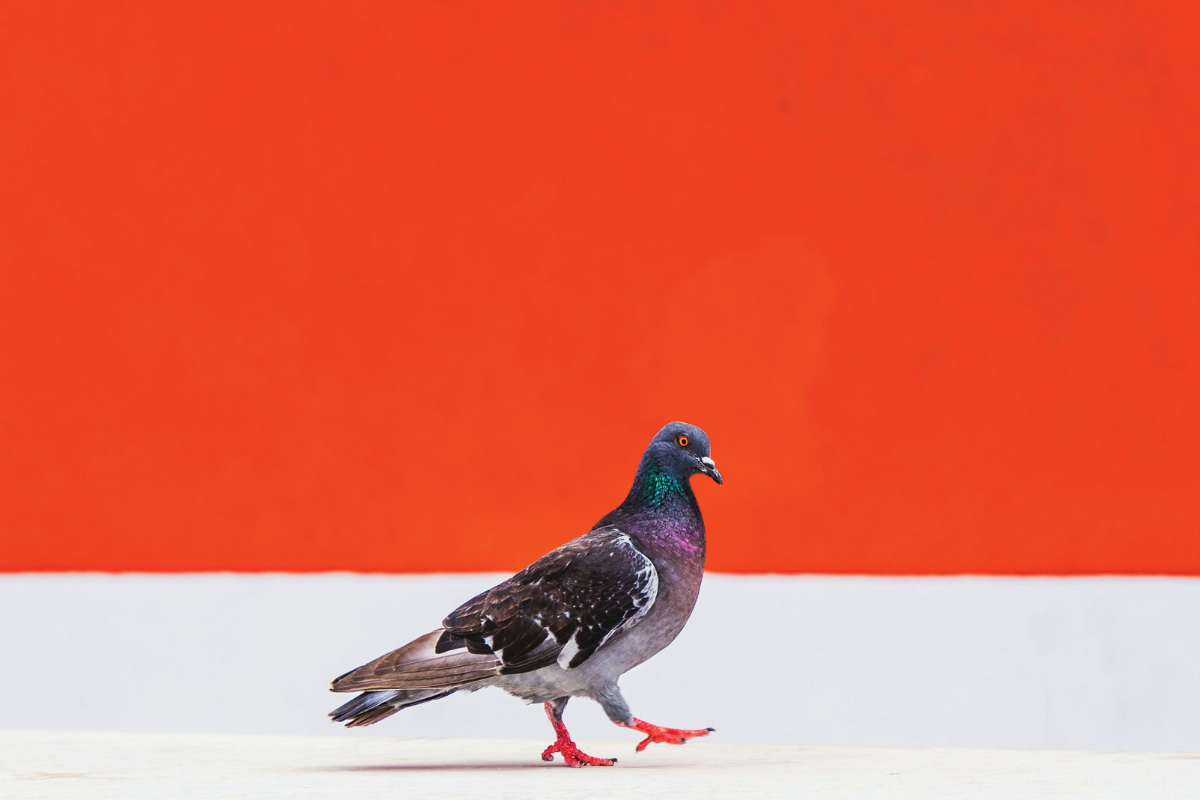By Scott Smith
I love my backyard bird feeder. It makes me feel good about helping my winged neighbors survive the long New England winter and, as spring turns to summer, helping the next generation of birds thrive. Studies have shown that in places where feeders abound, bird nests are more plentiful and more fledglings survive.
I especially like how my bird feeder gives me a front-row seat—at least from my kitchen window—to watch how all these birds flock together, not just to share and squabble among their own but with other bird and animal species.
Yes, there is a pecking order. The score or so of house sparrow get along quite well with the two pairs of cardinals, as do the assorted finches and wrens. The mourning doves—as many as a dozen at a time—actually seem to like it when the woodpeckers come to spill seeds on the ground with their rapid-fire pecking away at the feeder. Of course the blue jays are bossy, but wouldn’t you be, too, if you looked like that? And everybody scatters when the cooper hawk does a fly-by.
What I don’t get is why so many people think they have to create their own pecking order of “good” bird and “bad” birds. Blue jays, starlings, and sparrows are labeled as backyard bullies at bird feeders. People freak out when they see turkey buzzards, despite all the good they do, and Canada geese always seem to be in the crosshairs, despite the protected status granted to them and other wild birds by the Migratory Bird Treaty Act.
“Our tendency to label some birds as ‘good’ and other birds as ‘bad’ is not just misguided, it gives local, state and federal agencies license to eradicate bird species they deem ‘bullies’,” says Priscilla Feral, president of Friends of Animals. “That’s especially true of introduced species, like sparrows and pigeons; anything we don’t call ‘native’ is bad. Is that any of our business?”
Friends of Animals has fought on behalf of so-called nuisance birds for decades. In 2017, we won our battle to save New York State’s 2,200 mute swans from a government-sanctioned death sentence. Before that, we filed a lawsuit to stop the slaughter of thousands of double-crested cormorants in the Columbia River basin, scapegoated by federal agencies for salmon declines.
FoA has been a staunch defender of Canada geese, most recently in Minnesota, where authorities wanted to gas more than 300 of the birds, unfairly blamed for foiling efforts to restore a wild rice crop.
We’re going to the wall for barred owls in 2024. The U.S. Fish and Wildlife Service has proposed to enlist shooters to kill more than 500,000 barred owls over the next 30 years in the Pacific Northwest to save spotted owls. We submitted comments on the insane plan in January, pointing out that FWS has failed to consider alternatives that wouldn’t slaughter barred owls, such as limiting logging, forest restoration and habitat connectivity. FoA challenged the original “experiment” to kill barred owls to gauge the impact on spotted owls. We’ll also look over the final decision when it is issued to see if there is a legal challenge we can make.
Give all birds a fighting chance to survive
The sanctioned killing of “bad” birds continues despite steep declines in overall bird populations. The 2022 U.S. “State of the Birds” report showed the loss of 3 billion birds in the United States and Canada in the past 50 years.
The risks to birds are many, from pesticides to cats to windows, not to mention millions of trigger-happy hunters. The most intractable threat is loss of habitat, which is why grassland birds and shorebirds are experiencing the steepest declines.
Even some of the largest so-called invasive bird populations have receded over the last 50 years. Starling numbers have dropped by more than 50 percent; pigeons by nearly as much. In the 1940s, 150 million house sparrows inhabited the country; now that total is 7 million. The industrialization of American farms has played a role, along with the targeted killing of these birds on behalf of Big Ag interests.
It’s up to us to give birds a fighting chance to survive, especially those vilified as “bad” birds. Keep your cats indoors, support legislation to make office buildings bird safe and to protect the habitat and related species that birds depend on to survive, like the imperiled horseshoe crab, whose eggs are vital to migrating shorebirds like the red knot.
You can also make changes in your own backyard to help all birds. Plant native wildflowers and shrubs for year-round feeding, as well as trees like oak, which hosts hundreds of kinds of caterpillars and other bugs that birds feed on. Keep a brush pile near your bird feeder to provide refuge for songbirds and other small birds from predators like foxes and hawks.
You can vary the types of feed you offer backyard birds to attract the ones you like most. And while there are remedies about sparrow-proofing your bird feeder or discouraging starlings and grackles, here’s a thought: Why not just let these birds of a feather flock together?
“All of these species contribute something to ecosystems,” says FoA’s Feral. “They all have something to offer. Just let them be.”

